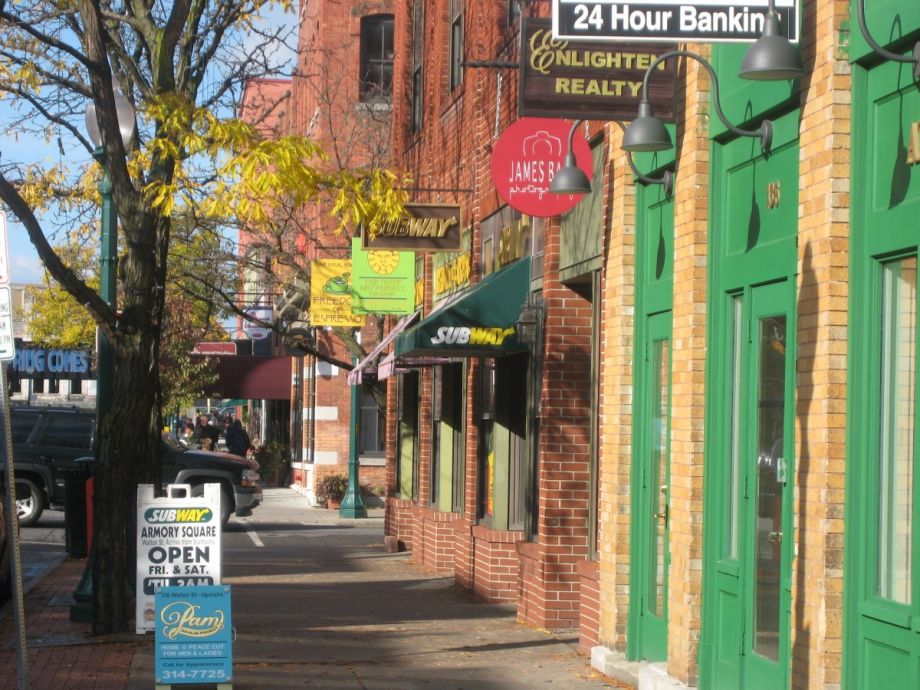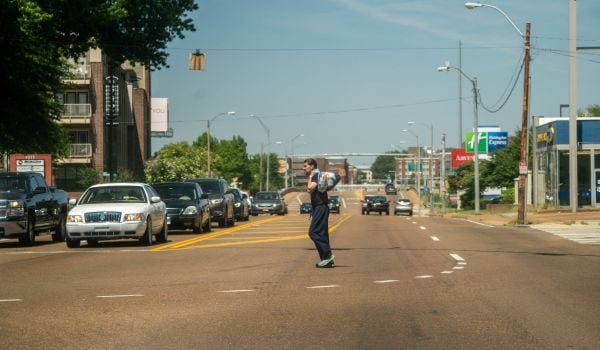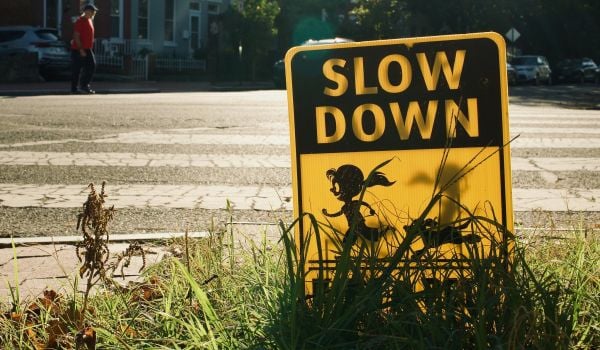Update: In June of 2021, the Syracuse Common Council officially approved a municipal sidewalk takeover program, in which the city would take over maintenance and shoveling of all city sidewalks. It will be paid for by a phased-in fee: $100 for homeowners and $300 for commercial property owners. In December 2021, the city voted to spend up to $650,000 to plow up to 100 miles of sidewalks this winter.
As the snowiest city in the United States and even one of the snowiest in the world, Syracuse, New York struggles with keeping the 124 inches of average snowfall it sees off its sidewalks in winter.
Traditionally, the city relied on property owners to clear the sidewalks on their properties as outlined in what Corey Driscoll Dunham, the city’s chief operating officer, describes as a “vague ordinance.” Because of the consistent lake-effect snow Syracuse gets, it’s been hard for the city to determine and, therefore enforce, exactly when sidewalks are expected to be cleared. “Do we say sidewalks have to be clear six hours after it snows? What if it never stops snowing?” she says about the city that saw 66 continuous hours of snow in 2018.
Driscoll Dunham spent several years working in code enforcement. She came out of it with an understanding of the time-intensive difficulties of enforcement — tracking violations, issuing and following up on tickets, and finally issuing fines. So when the city began discussing ramping up ticketing property owners who didn’t shovel their sidewalks, Driscoll Dunham disagreed. “Our goal from a removal standpoint was to get the sidewalks cleared,” she says. “What’s the easiest way to guarantee it will be cleared? If we do it ourselves.”
So, in 2018 the city took over snow clearing responsibilities for 20.1 miles of city streets. Since most of Syracuse’s streets have sidewalks on each side, the city was agreeing to clear more than 40 miles of sidewalk.
The city worked with the Syracuse Metropolitan Transportation Council, the group responsible for the metropolitan region’s transportation planning, to decide which streets to start with. SMTC identified the best places to start based largely on which sidewalks saw both high levels of pedestrian traffic and those that often saw people diverting them to walk in the street instead — a common, albeit risky, workaround when sidewalks aren’t cleared. “We used common sense and computer tools to filter things out,” says James D’Agostino, director of SMTC.
When a limited program like this is introduced, it can be easy for residents to question why certain streets were selected over others. “A major reason why our program has been a success is that it’s driven by data,” Driscoll Dunham says.
Rather than investing in equipment themselves, the city contracted with a local company to carry out the work for $170,000. The following year, the city scaled up the project to cover 38 street miles and increased the cost to $250,000. Syracuse University also stepped up to clear some city streets on and adjacent to campus, adding to the program voluntarily. Other cities have taken notice: last month, Boston city councilors heard from Driscoll Dunham while debating whether to apply the model there.
Driscoll Dunham created a contingency budget for keeping the program moving forward, but it was paused last year thanks to pandemic-related budget shortfalls. In the meantime, Driscoll Dunham has been coming up with other ideas for funding and expanding the program.
First there’s the potential to use federal aid money, but the city is waiting on spending guidance first. Second, she’s given the city council a proposal for a completely municipally owned sidewalk program that would take complete ownership of the sidewalks, from snow removal to repairs, funded by fees from property owners. She proposed starting at $20 a year for residential properties and $60 for nonresidential and scaling that up respectively to $100 and $300 annually across five years.
While no one likes an extra fee, Driscoll Dunham thinks many might actually prefer it. Not only are residents currently responsible for shoveling their sidewalks, they’re also held responsible for repair bills, which can sometimes stretch into the five figures. Returning sidewalks to city control would help property owners avoid both these costs. “Sidewalks are a public good,” she says. “It’s not like you only walk on the sidewalk in front of your house.”

Cinnamon Janzer is a freelance journalist based in Minneapolis. Her work has appeared in National Geographic, U.S. News & World Report, Rewire.news, and more. She holds an MA in Social Design, with a specialization in intervention design, from the Maryland Institute College of Art and a BA in Cultural Anthropology and Fine Art from the University of Minnesota, Twin Cities.
Follow Cinnamon .(JavaScript must be enabled to view this email address)
















